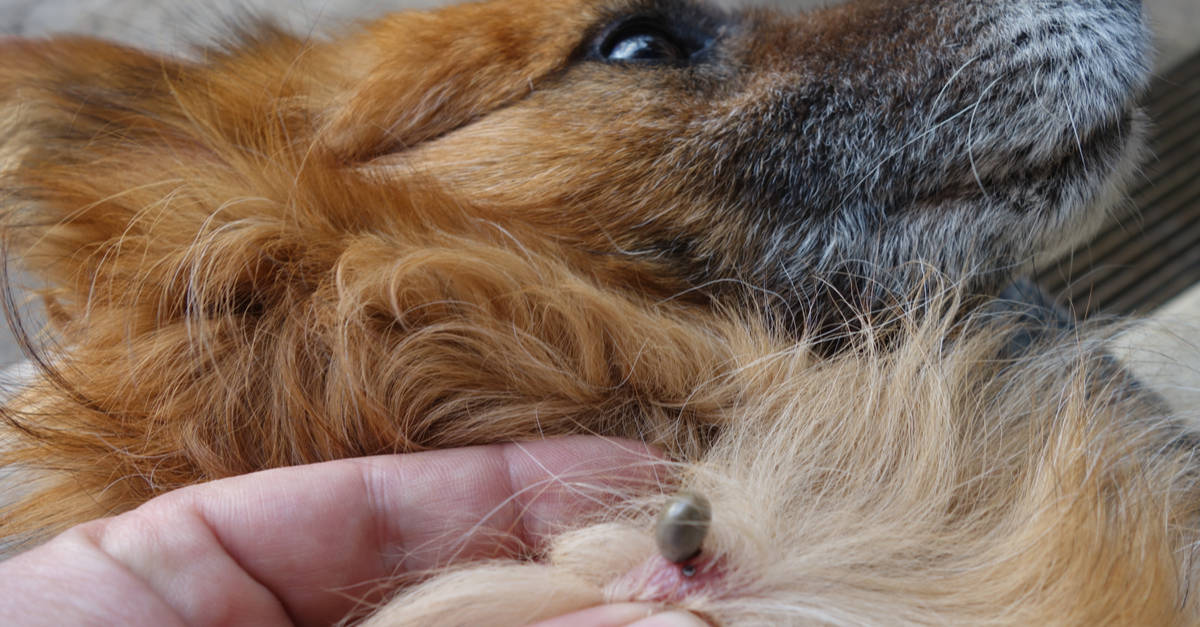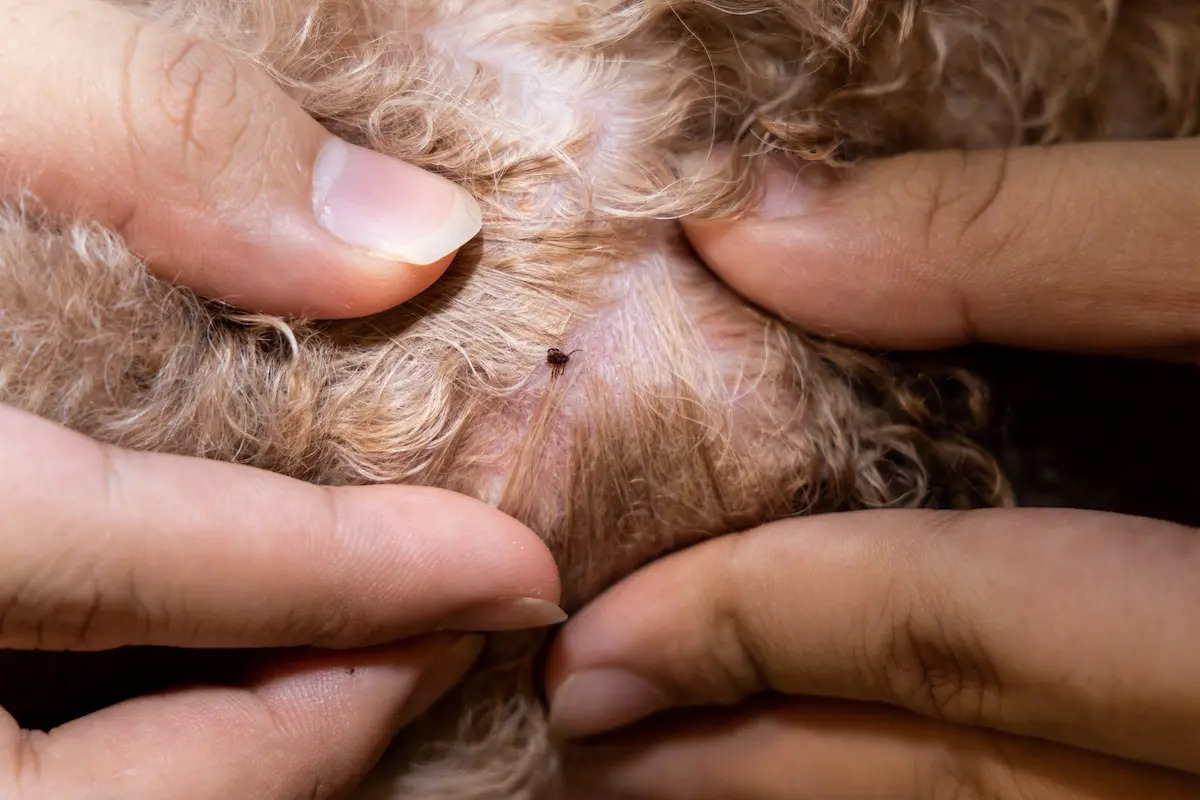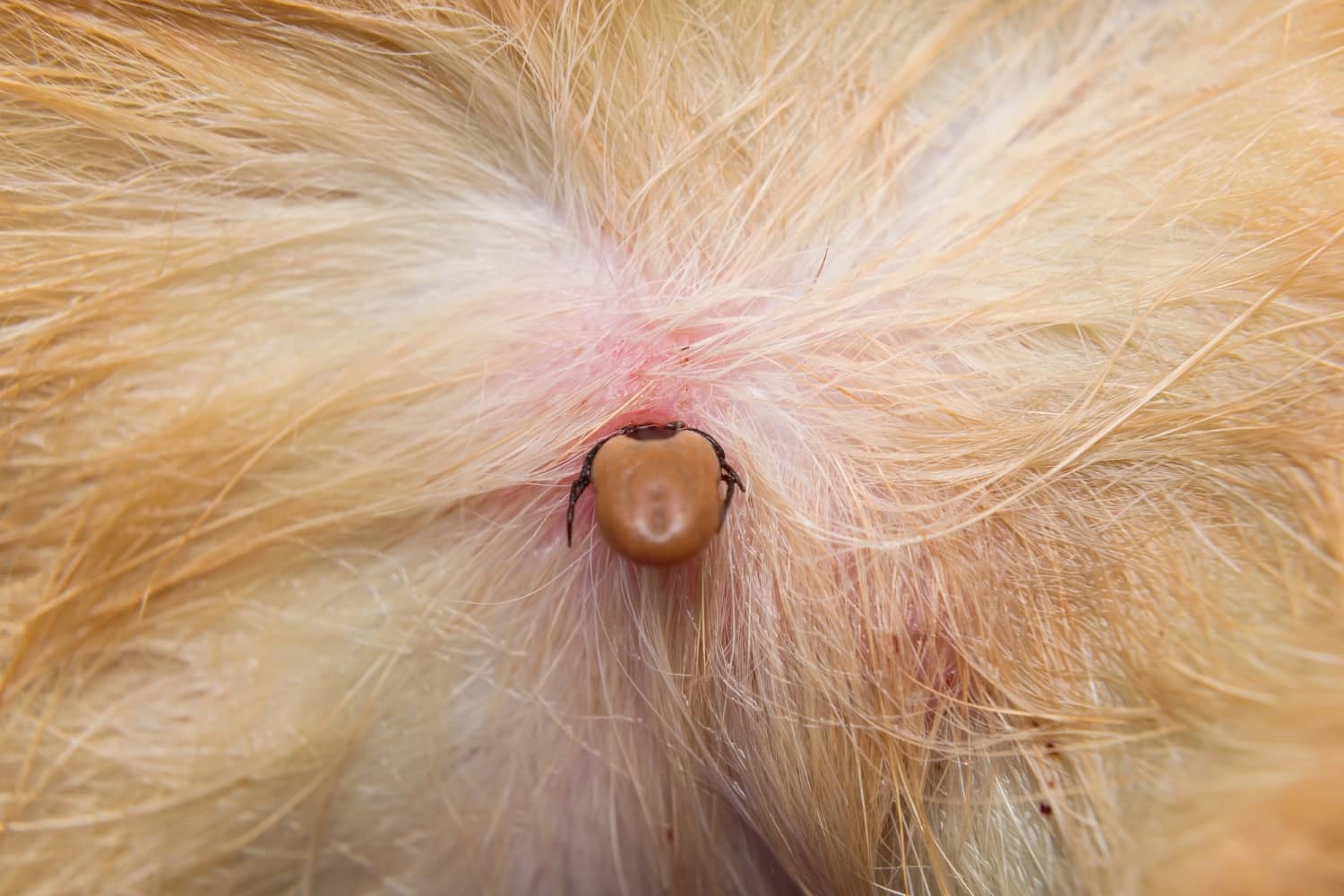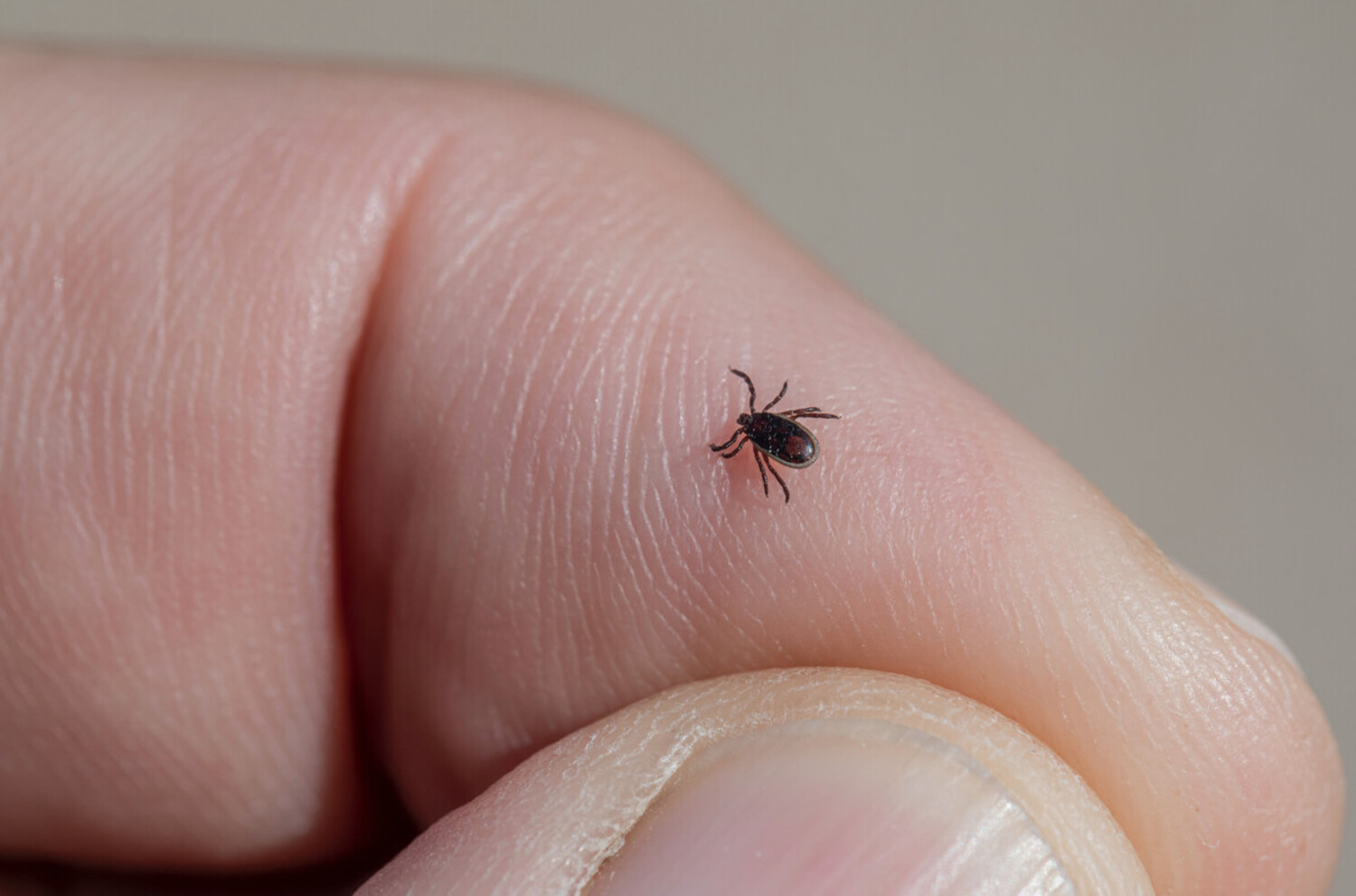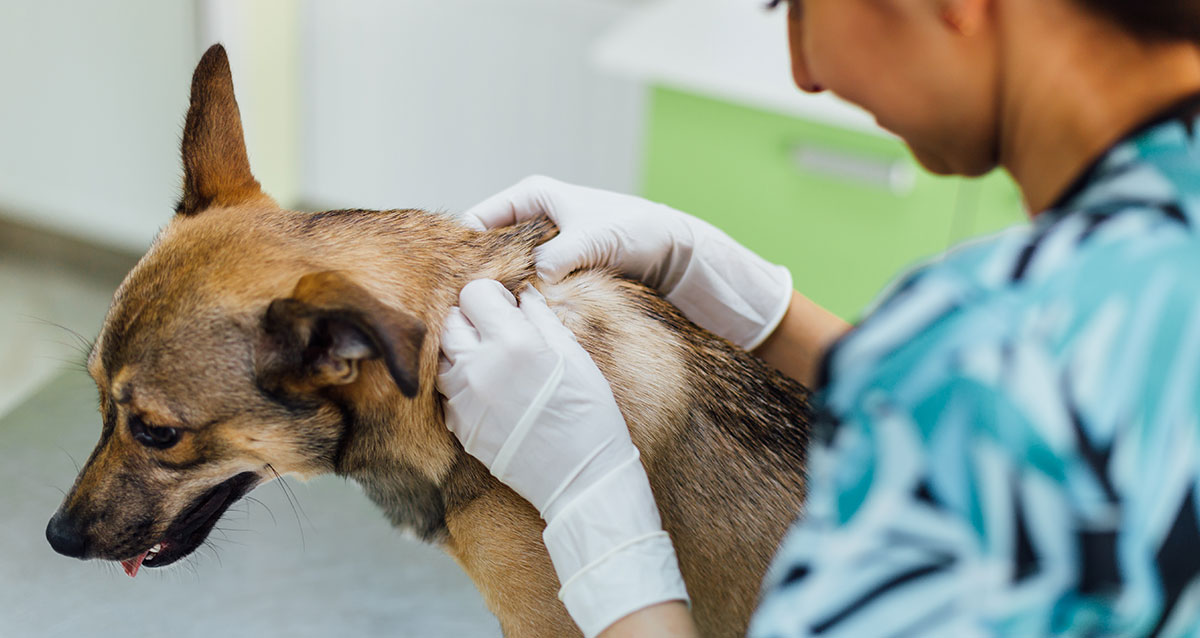Home>Health & Wellness>Common Health Issues>What Happens To A Tick That Bites A Dog Treated With Nexgard
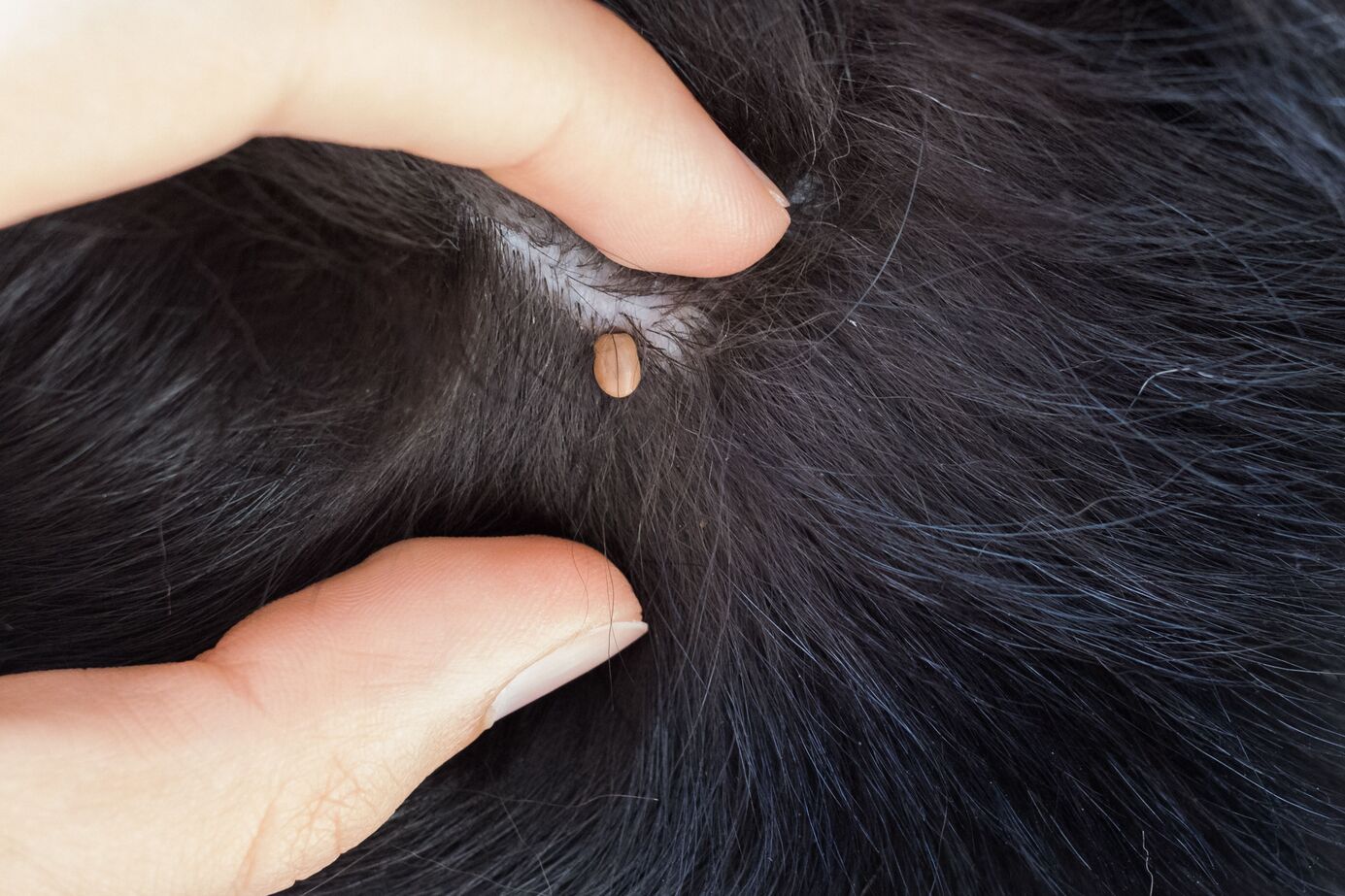

Common Health Issues
What Happens To A Tick That Bites A Dog Treated With Nexgard
Modified: February 21, 2024
Discover how Nexgard treatment affects ticks that bite dogs and learn about common health issues. Protect your pet with Nexgard.
(Many of the links in this article redirect to a specific reviewed product. Your purchase of these products through affiliate links helps to generate commission for Pawsomeoldies.com, at no extra cost. Learn more)
Table of Contents
Introduction
Nexgard is a popular and effective prescription medication used to protect dogs from fleas and ticks. It is available in the form of a chewable tablet and is known for its rapid action in killing ticks. When a tick bites a dog that has been treated with Nexgard, it encounters a potent defense mechanism that can have significant implications for its survival. Understanding the impact of Nexgard on ticks that bite treated dogs is crucial for pet owners and veterinarians alike.
Nexgard contains a powerful active ingredient called afoxolaner, which targets the nervous system of ticks and fleas, leading to their rapid elimination. This oral medication is designed to disrupt the life cycle of ticks, preventing them from reproducing and infesting the dog's environment. As a result, Nexgard not only protects dogs from existing tick infestations but also helps in preventing future infestations.
When a tick bites a dog that has been treated with Nexgard, it is exposed to afoxolaner through the dog's bloodstream. This exposure can have profound effects on the tick's physiology and survival. The rapid action of afoxolaner disrupts the tick's nervous system, leading to paralysis and eventual death. Additionally, Nexgard affects the reproductive capabilities of ticks, further reducing their ability to infest the dog and its surroundings.
Understanding the impact of Nexgard on ticks that bite treated dogs is essential for pet owners to comprehend the full extent of protection that this medication provides. By gaining insights into the potential outcomes for ticks that encounter Nexgard-treated dogs, pet owners can make informed decisions about their dog's tick prevention and treatment strategies.
In the following sections, we will delve deeper into the mechanisms of Nexgard and its effects on ticks, shedding light on the potential outcomes for a tick that bites a dog treated with this powerful medication.
Read more: What Happens If A Tick Bites A Dog
Understanding Nexgard and its effects on ticks
Nexgard, a leading prescription medication for dogs, is specifically formulated to combat fleas and ticks. Its active ingredient, afoxolaner, is a potent acaricide that targets the nervous system of ticks upon ingestion. This mechanism of action sets Nexgard apart as a rapid and effective solution for tick control.
When a dog ingests Nexgard, afoxolaner is absorbed into its bloodstream, circulating throughout the body. As ticks bite the treated dog, they are exposed to afoxolaner through the blood meal. This exposure triggers a series of physiological responses within the tick's body, leading to its demise.
Afoxolaner disrupts the normal functioning of the tick's nervous system, causing hyperexcitation and paralysis. This rapid onset of paralysis prevents the tick from feeding and ultimately leads to its death. Additionally, afoxolaner interferes with the reproductive capabilities of ticks, further reducing their ability to infest the dog and its environment.
The effects of Nexgard on ticks are not limited to the individual tick that bites the treated dog. As ticks are unable to reproduce and establish infestations, the overall tick population in the dog's surroundings is significantly reduced. This not only provides direct protection to the treated dog but also contributes to the prevention of tick-borne diseases and the maintenance of a tick-free environment.
Furthermore, Nexgard's systemic action ensures that ticks are eliminated before they can transmit harmful pathogens to the dog. By swiftly incapacitating ticks, Nexgard helps safeguard dogs from the potential health risks associated with tick bites, including Lyme disease, ehrlichiosis, and anaplasmosis.
In summary, Nexgard's effects on ticks are comprehensive and impactful. Its ability to rapidly incapacitate and eliminate ticks, disrupt their reproductive capabilities, and prevent the transmission of tick-borne diseases makes it a valuable asset in the protection of dogs from tick infestations. Understanding the profound effects of Nexgard on ticks underscores its significance as a frontline defense against these troublesome parasites.
The impact of Nexgard on a tick that bites a dog
When a tick bites a dog that has been treated with Nexgard, it unwittingly exposes itself to a potent defense mechanism that disrupts its physiological functions and ultimately leads to its demise. The active ingredient in Nexgard, afoxolaner, plays a pivotal role in exerting a profound impact on ticks that come into contact with a treated dog.
Upon biting a dog that has ingested Nexgard, the tick ingests afoxolaner through the dog's bloodstream. This ingestion triggers a series of rapid and detrimental effects within the tick's body. Afoxolaner targets the tick's nervous system, leading to hyperexcitation and paralysis. This paralysis not only impedes the tick's ability to feed but also renders it immobile, ultimately resulting in its death. The swift and comprehensive action of afoxolaner ensures that ticks are rapidly neutralized, preventing them from inflicting further harm on the dog and potentially transmitting harmful pathogens.
In addition to inducing paralysis, afoxolaner disrupts the reproductive capabilities of ticks. This interference significantly reduces the tick population in the dog's environment, preventing infestations and contributing to a tick-free living space for the dog. By impeding the ability of ticks to reproduce, Nexgard not only provides direct protection to the treated dog but also helps in curbing the overall tick population, thereby benefiting the broader community of pets and their owners.
Furthermore, the systemic action of Nexgard ensures that ticks are eliminated before they can transmit harmful diseases to the dog. By swiftly incapacitating ticks, Nexgard serves as a proactive defense against the potential health risks associated with tick bites, including the transmission of Lyme disease, ehrlichiosis, and anaplasmosis. This preventive approach underscores the significance of Nexgard in safeguarding the well-being of dogs and mitigating the impact of tick-borne illnesses.
In essence, the impact of Nexgard on a tick that bites a dog is comprehensive and far-reaching. From inducing paralysis and disrupting reproductive capabilities to preventing disease transmission, Nexgard's effects on ticks are instrumental in providing robust protection to treated dogs and contributing to the overall reduction of tick populations. This underscores the pivotal role of Nexgard in ensuring the well-being of dogs in the face of tick infestations.
Potential outcomes for a tick that bites a dog treated with Nexgard
When a tick bites a dog that has been treated with Nexgard, it encounters a formidable defense mechanism that significantly impacts its survival and reproductive capabilities. The potent active ingredient in Nexgard, afoxolaner, plays a pivotal role in shaping the potential outcomes for a tick that comes into contact with a treated dog.
One potential outcome for a tick that bites a dog treated with Nexgard is rapid paralysis and subsequent death. Upon ingesting afoxolaner through the dog's bloodstream, the tick experiences hyperexcitation and paralysis, rendering it immobile and unable to feed. This swift and comprehensive action of afoxolaner ensures that the tick is rapidly neutralized, preventing it from inflicting further harm on the dog and potentially transmitting harmful pathogens. As a result, the treated dog is effectively shielded from the adverse effects of tick bites, including the transmission of tick-borne diseases.
In addition to paralysis, another potential outcome for a tick that encounters Nexgard-treated dogs is the disruption of its reproductive capabilities. Afoxolaner interferes with the tick's ability to reproduce, thereby reducing the overall tick population in the dog's environment. This reduction not only provides direct protection to the treated dog but also contributes to the prevention of tick infestations in the broader community. By impeding the tick's reproductive cycle, Nexgard helps in curbing the proliferation of ticks, creating a safer and more comfortable living environment for dogs and their owners.
Furthermore, the systemic action of Nexgard ensures that ticks are eliminated before they can transmit harmful diseases to the dog. By swiftly incapacitating ticks, Nexgard serves as a proactive defense against the potential health risks associated with tick bites, including the transmission of Lyme disease, ehrlichiosis, and anaplasmosis. This preventive approach underscores the significance of Nexgard in safeguarding the well-being of dogs and mitigating the impact of tick-borne illnesses.
In summary, the potential outcomes for a tick that bites a dog treated with Nexgard are characterized by rapid paralysis, disruption of reproductive capabilities, and prevention of disease transmission. These outcomes collectively contribute to the comprehensive protection provided by Nexgard, ensuring the well-being of treated dogs and contributing to the overall reduction of tick populations. The profound impact of Nexgard on ticks underscores its pivotal role in safeguarding dogs from the perils of tick infestations.
Conclusion
In conclusion, the impact of Nexgard on ticks that bite treated dogs is profound and far-reaching. The potent active ingredient, afoxolaner, disrupts the nervous system of ticks, leading to rapid paralysis and eventual death. This swift and comprehensive action not only neutralizes the individual tick but also contributes to the reduction of the overall tick population in the dog's environment. By impeding the reproductive capabilities of ticks, Nexgard further curtails their ability to infest the dog and its surroundings, creating a safer and more comfortable living space for pets and their owners.
The potential outcomes for a tick that bites a dog treated with Nexgard are characterized by rapid paralysis, disruption of reproductive capabilities, and prevention of disease transmission. These outcomes collectively underscore the pivotal role of Nexgard in providing robust protection to treated dogs and mitigating the impact of tick-borne illnesses. Additionally, Nexgard's systemic action ensures that ticks are eliminated before they can transmit harmful pathogens to the dog, safeguarding the well-being of pets and offering peace of mind to pet owners.
By gaining a deeper understanding of the profound effects of Nexgard on ticks, pet owners can make informed decisions about their dog's tick prevention and treatment strategies. Nexgard stands as a frontline defense against tick infestations, offering comprehensive protection and contributing to the overall reduction of tick populations. Its rapid action, coupled with its ability to disrupt the reproductive cycle of ticks, positions Nexgard as a valuable asset in the ongoing battle against these troublesome parasites.
As pet owners prioritize the health and well-being of their beloved dogs, Nexgard emerges as a reliable and effective solution for tick control. Its impact on ticks that bite treated dogs extends beyond individual protection, encompassing the broader goal of creating tick-free environments and minimizing the risks associated with tick-borne diseases. In essence, Nexgard's influence on ticks underscores its significance as a vital component of comprehensive pet care, ensuring that dogs can thrive in a safe and tick-free environment.
